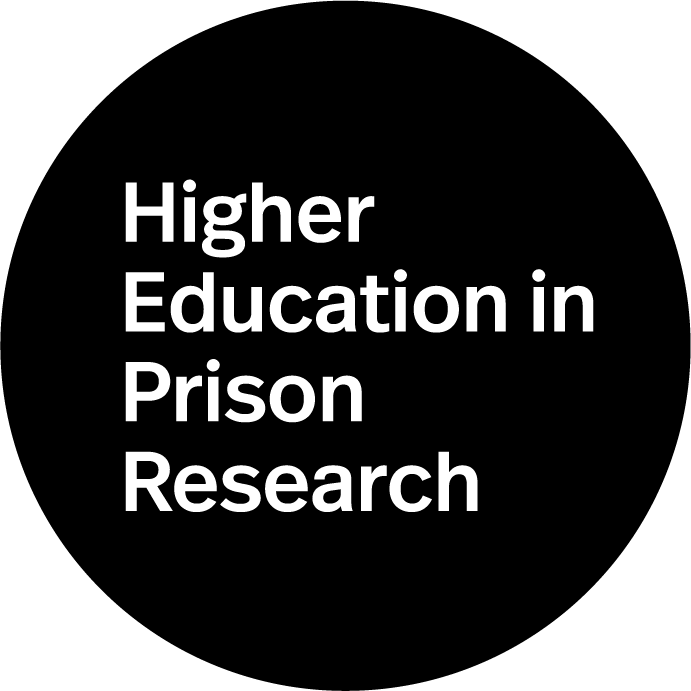Rationale for Prioritizing a Higher Education in Prison Research Infrastructure
Presently, higher education in prison (HEP) is at a critical turning point. Legislation is quickly being introduced to help increase incarcerated adults’ access to postsecondary coursework. State and federal policies are being adopted and extended to expand HEP programming. These are needed interventions that can greatly support the success of these programs and their students, but the paucity of adequate information on programs and their students’ outcomes, and of the structures and processes to guide such data collection at a national level, is a major obstacle for delivering on the promise of recent and expected developments in the field. That more and better research is needed to guide HEP is true for all stakeholders in and around HEP, and particularly for students themselves who are arguably the stakeholders with the most at stake.
Building a research infrastructure (RI) for the field of HEP presents challenges because it is heavily interdisciplinary, intentionally siloed, and extremely nuanced. To even refer to HEP as a “field” is something this working paper necessarily takes for granted, and we use it to refer to the diverse array of students, teachers, program administrators, government employees, corrections staff, policymakers, researchers, academic publishers, and organizations (among other entities) that work to administer, study, and advocate for postsecondary prison education. The various entities within HEP operate under a wide range of different conditions and expectations, have different social and political goals, and at times are beholden to specific but varying legislative requirements.1 Different stakeholder groups also see HEP through their own particular functional lenses, and HEP is simultaneously viewed, among other things, as a rehabilitative practice2 and as a social justice cause.3 This amalgamation, however, is not always agreed upon by those operating within the sphere of HEP.4
Furthermore, as a growing field, HEP is unencumbered by disciplinary boundaries. However, a lack of clear definition has also led to challenges in effective interdisciplinary communication and caused additional distance between different groups of researchers. For instance, scholars from a diverse array of academic departments such as education, psychology, public policy, sociology, history, and criminology publish peer-reviewed studies on HEP in academic journals—the most common type of publication assessing HEP programs.5 Each of these journals and their corresponding learned societies conduct research using their own discipline-specific standards and practices. Similarly, research is regularly developed and disseminated within the isolated confines of individual HEP programs or correctional facilities, following varying traditions, standards, and practices. These disparate efforts across core research groups make it such that, for much of HEP’s history, empirical studies have been circulated within the niche channels attached to authors’ home departments or individual programs’ direct stakeholders. Unaffiliated researchers and organizations are thus often unaware of these studies and their findings—let alone able to draw and build on them. Additionally, the jargon and tools used in these different outputs can be inaccessible to those outside of the communities producing them.
An HEP RI can help bridge these divides. It has the potential to establish a common sandbox in which all researchers and relevant stakeholders are invited to play, despite their dissimilar background and training, and to empower cross-disciplinary collaboration. It can establish guidelines, norms, and structures for creating a larger and more diverse pool of researchers—including incarcerated researchers6—to engage in sustained and collaborative inquiry based on ethical and rigorous research practices. It also provides novel channels for disseminating research studies outside of traditional disciplinary boundaries—broadening accessibility to a myriad of HEP stakeholders—which in turn equips the greater HEP community with an increasingly comprehensive and sophisticated body of evidence for delivering high-impact, high-quality postsecondary education to learners. An HEP RI may also help to interpret, reconcile, and implement different requirements for program qualification and reporting imposed by legislation at the state and federal level. Fortunately, as we work toward the facilitation of a robust, ethical, and sustainable HEP RI, we need not build it from scratch. Rather than creating an HEP RI from square one, we envision this endeavor as expanding and improving upon extant elements already in operation.
- For example, state facilities and their programs often have the burden of both federal requirements (for funding) as well and their state’s unique requirements (for funding and overall facility management).
- Where the goal for “postsecondary correctional education” (PSCE) is “to advance inmates’ educational attainment levels to improve their opportunities for employment following release from prison and reduce their odds of recidivating.” See Lois M. Davis, Robert Bozick, Jennifer Steele, and Cathryn Chappell, “Practice Profile: Postsecondary Correctional Education (PSCE),” (2014).
- Under the philosophy that “all people, regardless of their location or circumstance, should have access to quality higher education.” See Alliance for Higher Education, “Why We Do This Work.”
- Perhaps the largest contention is that correctional education is part of higher education. See Erin L. Castro and Mary Rachel Gould, “What is Higher Education in Prison? Introduction to Radical Departures: Ruminations on the Purposes of Higher Education in Prison,” (2018), p. 3.
- We identified, reviewed, and coded eligible studies to help us better understand the HEP research landscape. This database is composed of empirical studies on the impacts of higher education in prison (HEP). The studies that appear in this database represent known research on HEP programs and students in US prisons since Federal Pell Grants began funding them in 1965. Inclusion is not an endorsement of a study, its content, or its findings, as they have not been vetted for quality or any other indicator outside of basic qualifying information.
- See the “Prioritize Justice-Impacted Individuals’ Involvement in HEP Research” section of this paper for a more detailed discussion of the role of incarcerated learners in shaping HEP research and how an HEP RI can establish and facilitate their role.
